Frankenstein’s Lab in the Dome of Visions
30th of November 2015
Frankenstein’s Lab in the Buckminster Fuller inspired Dome of Visions with Yann Coppier, Knud Riishøjgaard, and Hanne Tofte Jespersen.
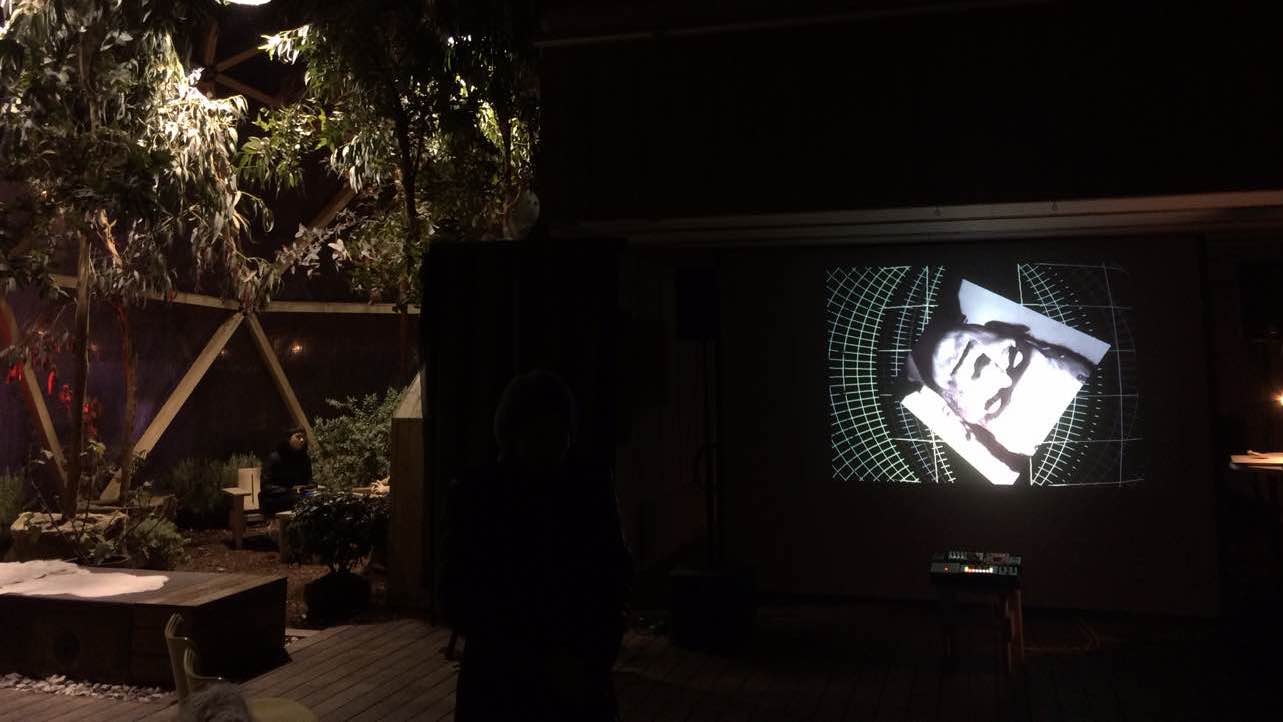
SDG
Yann Coppier presented a pedal-board instrument developed especially for a theatre piece1 in which he performs live on stage alongside four actors. The (now discontinued) Monome Aleph plays a central role in Yann’s construction which also includes a Monome Grid, an Eventide H9, an OTO Biscuit, and two sensors that enable theremin-like control of the board. Yann talked about his motivation for getting out from behind his computer and investing time (and money) in a rig that, perhaps precisely because of its (carefully thought out) restrictions, makes it well suited to creating music on and for the stage.
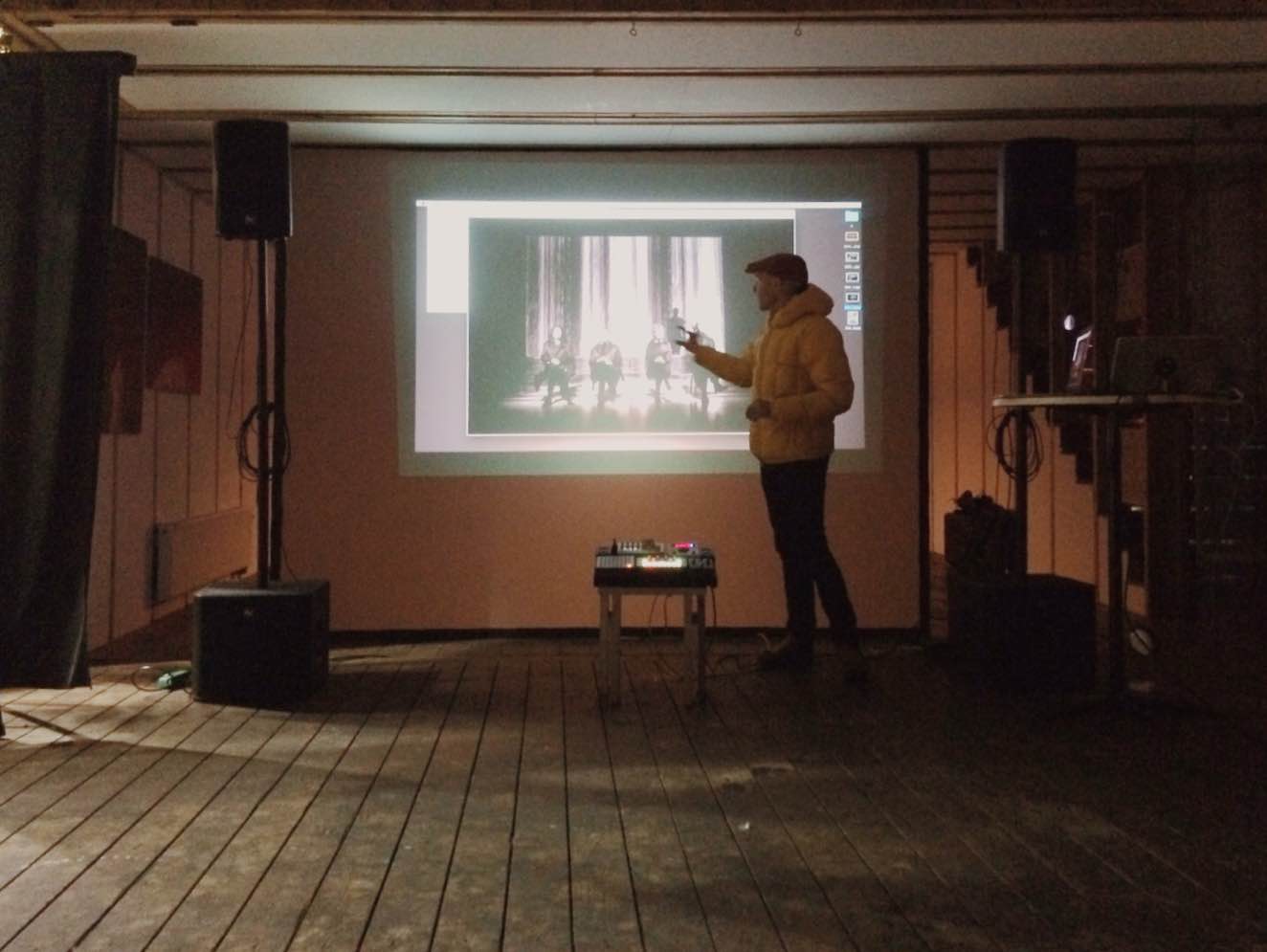

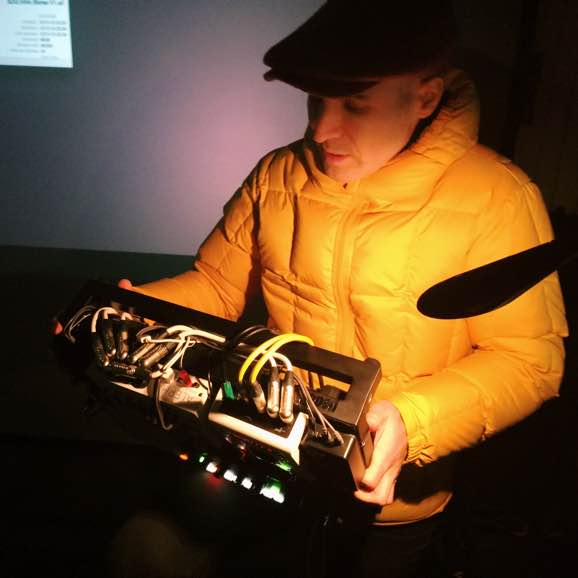
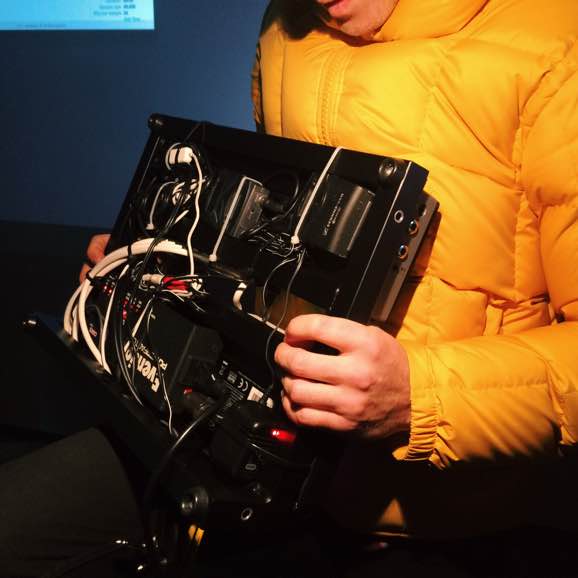
Yann wanted to avoid creating a fixed score that mimicked the theatrical action and focussed on creating a setup in which he could respond to the subtle changes in delivery as the actors performed their lines each night. While the music isn’t fixed, the ‘improvisations’ are played out within a strictly planned framework, as can been seen in the ‘scores’ for each scene.
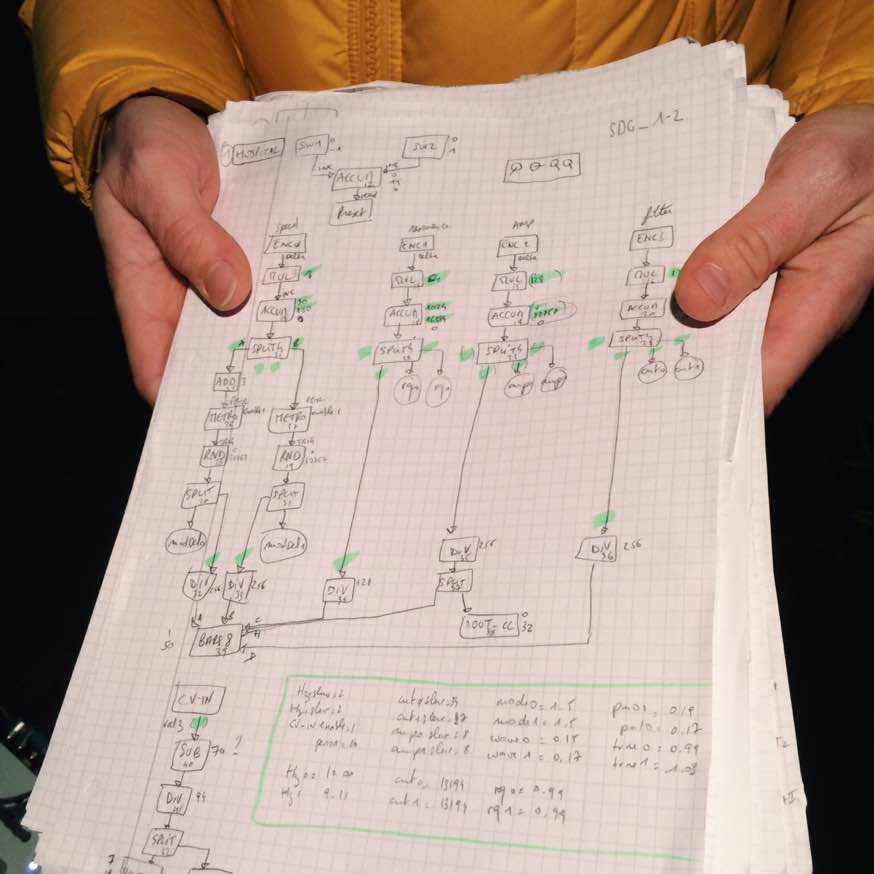
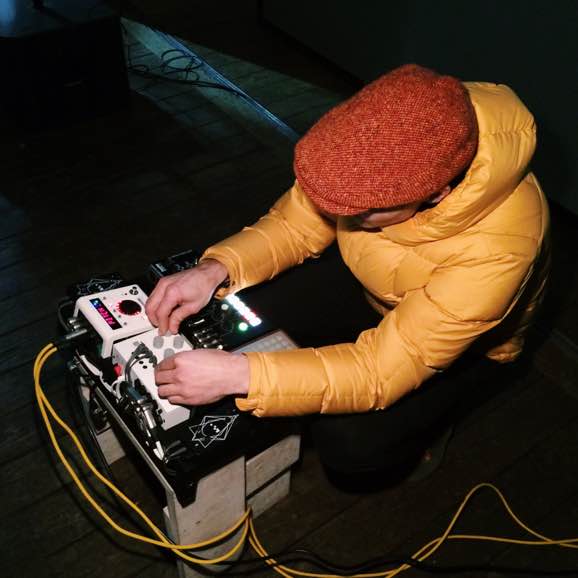
Armed with Friendliness
Knud Riishøjgaard presented three sections from Armed with Friendliness, a lecture/performance that he is currently working on. The piece explores various ways in which research and collected materials (such as interviews) can be brought together and presented in an extended lecture format. Knud is currently attending postgraduate courses at the Odsherred Theatre School, and this is apparently a tactic by which the students get to share the high volume of reading and research required of them.
Knud’s lecture tackles the thorny refugee problem that currently fills a prominent place in (Danish) politics. Keen to avoid polarisation, he advocates a broad embrace – also of those against welcoming refugees into the country. The excerpt he presented began with the spoken text of someone strongly opposed to accepting refugees, followed by a section in which Knud (with the help of VJ Shoreh Shahrzad) attempted to clarify the problems of polarisation through the use of sound and animation. The third section consisted of sentences in which a number of priests sum up what they consider to be the essence of Christianity. (Denmark has recently, for the first time in its government platform, declared itself a “Christian” land.)
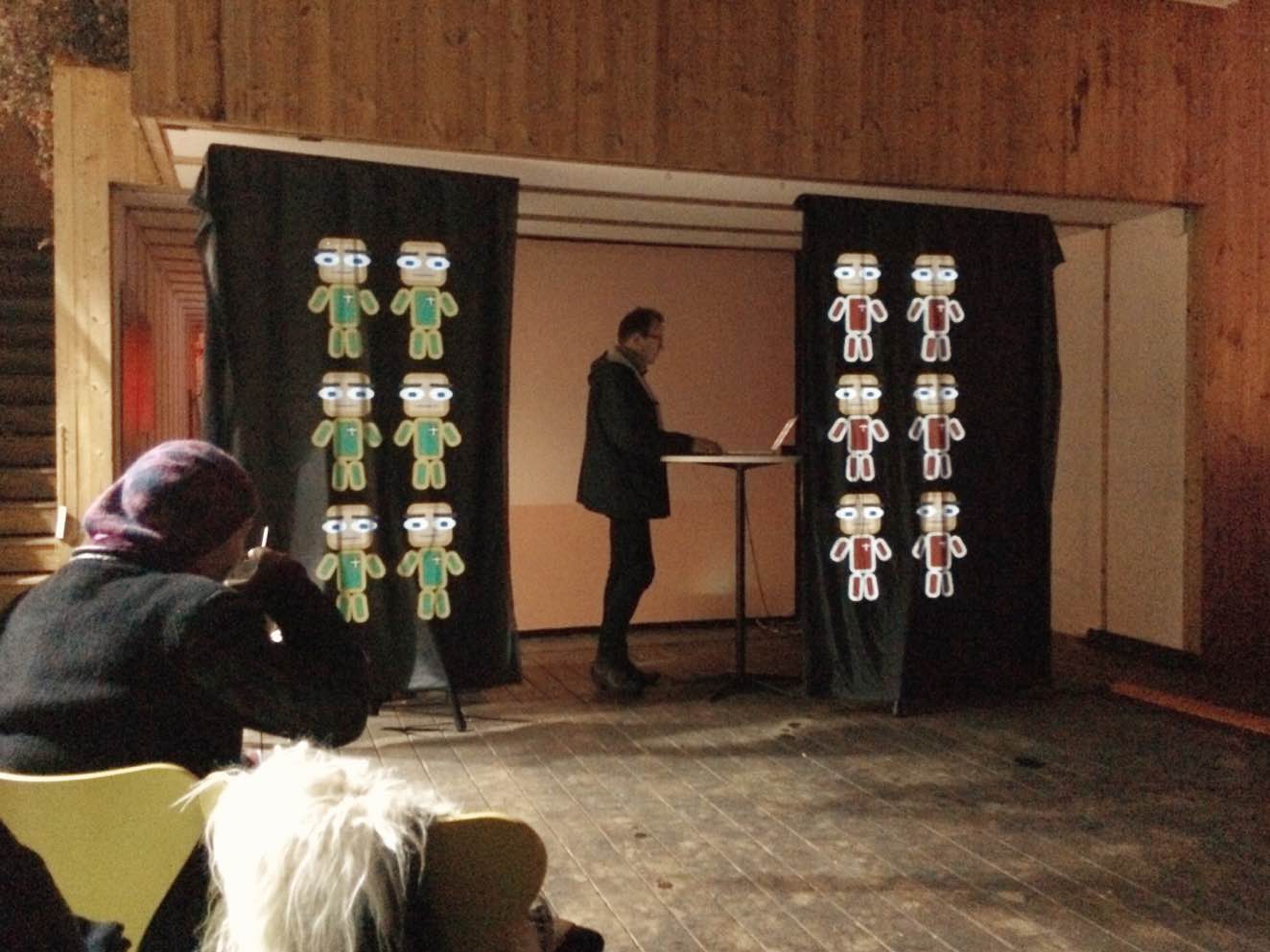
A good deal of the discussion that followed concerned the clarity of the text. What are the expectations set up by calling something a ‘lecture performance’? Knud’s textures were certainly poetic and he made it clear that he wished to avoid spoon-feeding the audience. While some welcomed this approach of challenging listeners to pay careful attention by partly obscuring the speech, others questioned the effectiveness of presenting a lecture in which one was too careful to avoid lecturing – especially given the intensity of the topic. All fuel for Knud’s work-in-progress.
If the Land could Talk
Hanne Tofte Jespersen presented If the Land could Talk / Hvis Landet Kunne Tale, a ‘collaborative composition’, or rather a whole series of compositions, in which children perform alongside a trio of professional musicians and work together with a visual artist as part of the process.
Hanne’s project builds on the premise that the human mind and the landscape in which we find ourselves are intimately related as two living entities. In the same way that she has noticed different kinds of melodies appearing in her mind when meditating on certain texts or taking walks in nature, her aim is to encourage an awareness in children of what it is that appears in their minds when paying attention – in this case to the local natural environment.
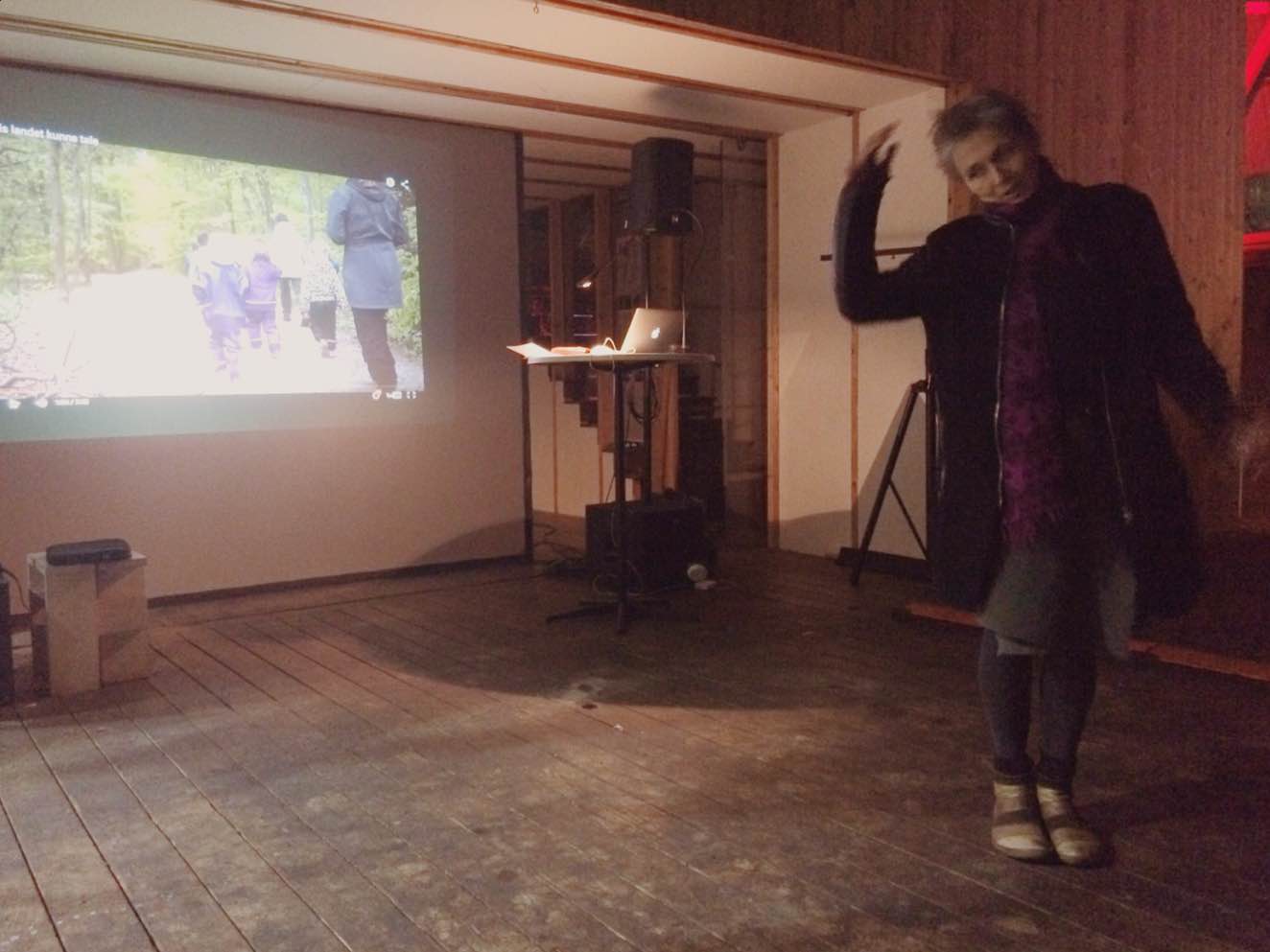
Hanne described six-week processes that begin that begin with taking walks with the kindergarten children in their local landscape, be it urban or rural. During these excursions she records as much of the children’s snippets of song as she can, also noting their observations, and then uses this material as the basis for fully ‘composed’ songs. These pieces are then put together as part of a larger performance in which the children sing alongside a trio of professional musicians: The entire process hopefully giving the children as sense of what their small observations and impulses to song can lead to when given the opportunity to grow.
Hanne has collected the results of the various trips, made across the length and breadth of Denmark, on a website which is a work in itself. In addition to a short film introducing the project, it also includes sound examples, sheet music and photo galleries from her work with the different groups of children.
The Dome of Visions was an inspiring alternative venue for Frankenstein’s Lab. Despite its energy-efficient qualities, the absence of any heating on the day of the lab made for a rather chilly experience and the blankets available were much appreciated. The dome’s temperature fluctuations can be followed via a special heat map page on their website: Looking back on the timeline the average outdoor temperature on 30 November was 5.7° and the average indoor temperature 13.6°. The average evening temperature was however a good deal cooler! Fortunately there was an ample supply of hot chocolate and warm tea from the bar.
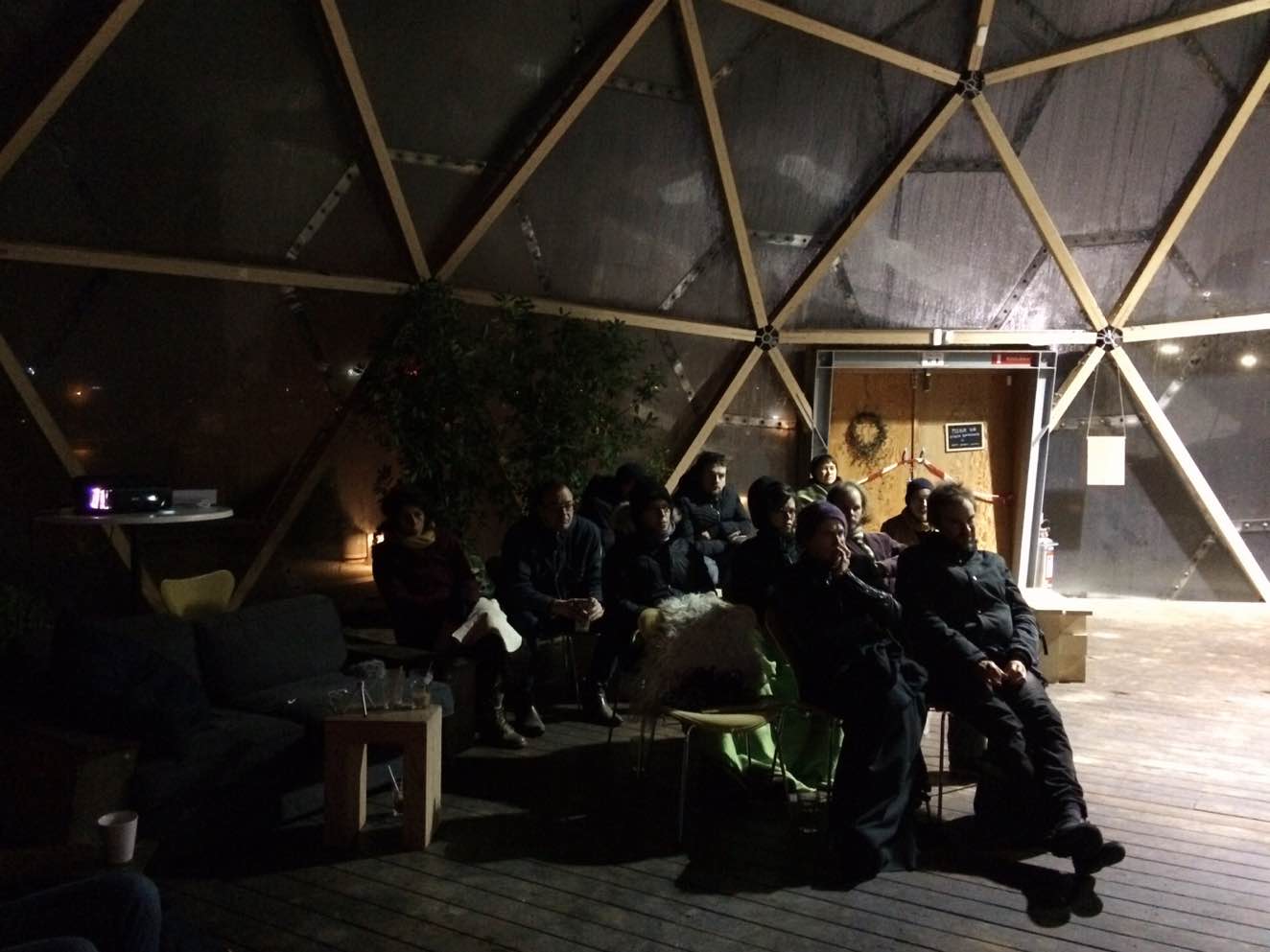
-
Soli Deo Gloria, at the Betty Nansen Theatre until 19.12.2015 ↩
-
Frankenstein’s Lab, following the initiative of …
-
Frankenstein’s Lab at Illutron →
Sandra Boss , Harald Viuff , Christian Liljedahl and …
